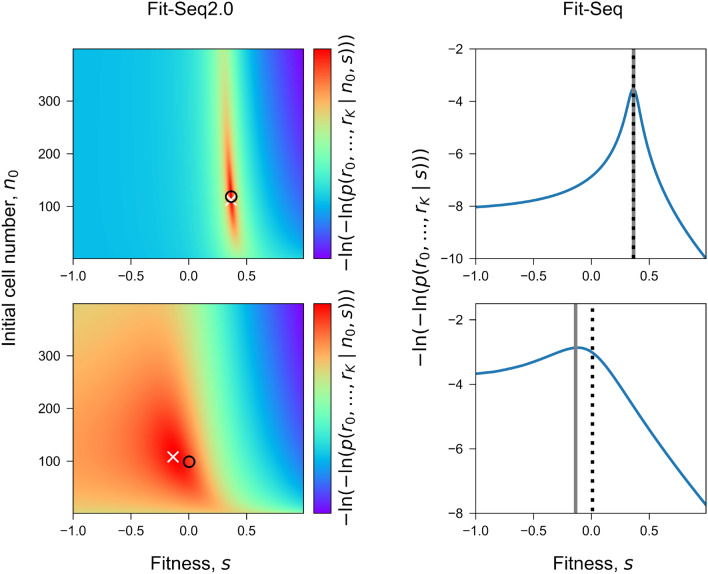Fig. 2.
Inference accuracy of the fitness. Comparison of the true fitness in simulation and the fitness inferred by Fit-Seq2.0 (red) and Fit-Seq (blue) for different sequencing read depths (columns) and distributions of fitness (rows). Each panel in the array corresponds to one simulation (Section Simulation). Each point corresponds to a lineage in the simulation. is the Pearson correlation coefficient. is the average absolute error, which is defined as for each lineage. The 4th column in shows comparison between the true distribution of the fitness f(s) in simulation (gray) and the inferred (blue for Fit-Seq and red for Fit-Seq2.0). Percentage is the fraction of lineages with more accurate estimation for the fitness using Fit-Seq2.0. Estimates generated with Fit-Seq2.0 have a higher Pearson correlation coefficient and lower absolute error when compared with Fit-Seq. The distribution of fitness effects estimated by Fit-Seq2.0 also closely matches the true distribution in the simulation

